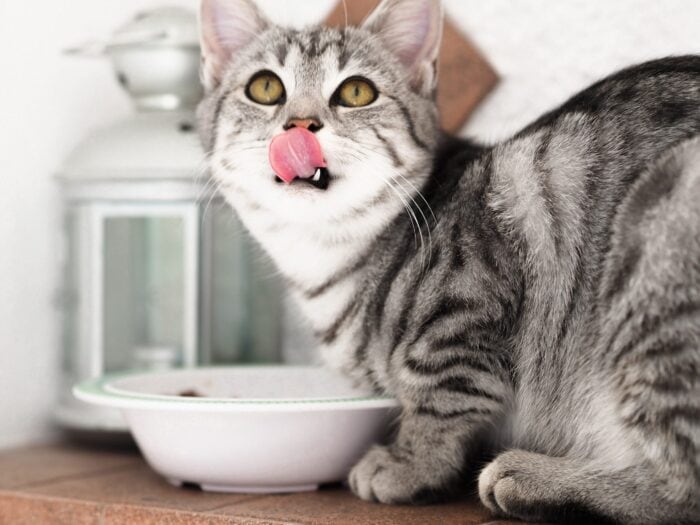We all like to over-indulge once in a while, and sometimes, we would like to indulge our cats as well. Most cats are fed a complete, nutritionally balanced diet that meets all their needs, but what if we want to add a little spice to their culinary life? It’s not uncommon for our cats to steal a taste of what we’re eating, but then we need to worry if what they’ve eaten is harmful. So, here are some safe, feline-friendly treat recipes that will make you the most popular person to ever be owned by a cat.

Before You Begin
First things first: we need to know what sort of ingredients we should be including and what to stay away from. There are lots of online resources to tell us what foods are toxic or dangerous for cats, so here is a detailed list of what we should not be putting on the shopping list.
Cats are obligate carnivores. This means that their diet must be predominantly animal-based. They need high levels of protein, moderate fat levels, minimal carbohydrates, plus the right balance of vitamins, minerals, fatty acids, and amino acids. Provided your cat is on a good-quality, commercial cat food, you won’t need to worry too much about the nitty-gritty of these nutrients when making treats, but the most important takeaway is that our cat treats need to be meat-based.
Before serving up full-sized portions of these treats, give your cat a teaspoon-sized taster and monitor for any adverse reactions over the next 12 hours before offering a full serving size. It is important to remember that, just like for us, treats should not be fed regularly, and moderation is key. These are treats, after all, not something to feed every day.
If your kitty is on a special diet, is diabetic, overweight, or has renal disease, talk to your vet about alternative ways to treat your cat, as these snacks will not be appropriate.

Top 12 Homemade Cat Treat Recipes
1. January – Winter Warmer Casserole
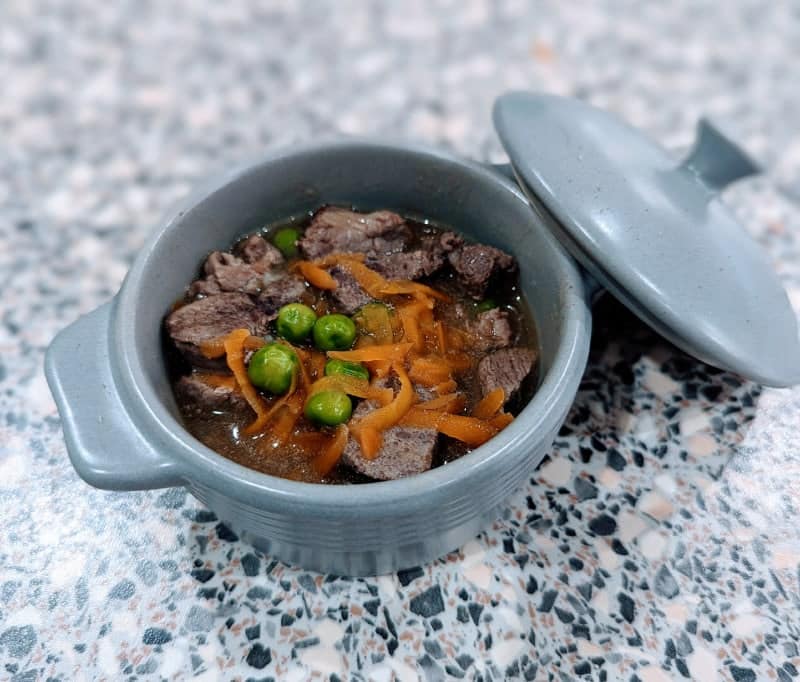
- 5 ounces of meat (e.g., chicken, beef, veal, rabbit) cut into bite-sized cubes
- Liver cut into 1-inch strips
- Half a carrot, grated
- Frozen peas (equivalent amount to the carrot)
- 1 tablespoon cornstarch
- 7 fluid ounces of water
Lightly brown the meat and liver, then combine with the water, carrot, and peas in a small saucepan and keep on low heat for 5 minutes, stirring occasionally. Add the cornstarch gradually until the sauce begins to take on a gravy consistency. The sauce will thicken more during cooling. Add water or cornstarch if too thick or thin. Serve once cooled.
Store in the fridge for up to 3 days or in the freezer for up to 3 months. Remember to store in portion sizes so you don’t thaw and refreeze any of the casseroles.
- Serving Size: 4 tablespoons per cat
2. February – Jerky Hearts
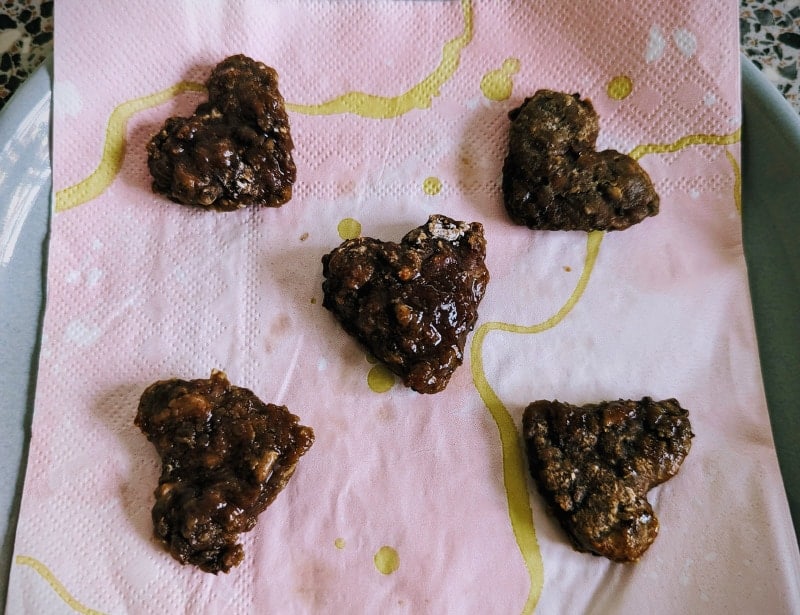
- Approximately 3.5 ounces of liver
- ½ cup of cornstarch, plus extra for working the mixture
- Oil (olive or canola)
- Food processor/blender
- Small, heart-shaped cookie cutter
Preheat the oven to 350oF and line a baking tray with baking paper. Use a basting brush to apply a layer of oil to the tray.
Chop the liver and place it in the food processor with the cornstarch. Blend until just starting to get smooth; don’t overdo it. Aim for a dough-like consistency—you may need to add extra cornstarch to get it right. Roll the liver mixture onto a floured surface (easier to do in portions). Flour your hands, press the mixture into a 1-centimeter-thick layer, and use the cookie cutter to cut out the hearts. It’s a bit fiddly at first, but once you get the consistency and technique right, you’ll have lots of hearts in no time!
Lay the hearts onto the tray and cook for 10–15 minutes. You want the final product to be a chewy consistency, not hard.
Allow the hearts to cool, and get ready to fight back the felines! Store them in an airtight container in the fridge for up to 5 days or in the freezer for 3 months.
- Serving Size: 1 liver heart per week (but they can have two on Valentine’s Day!)
3. March – Fish and Chips
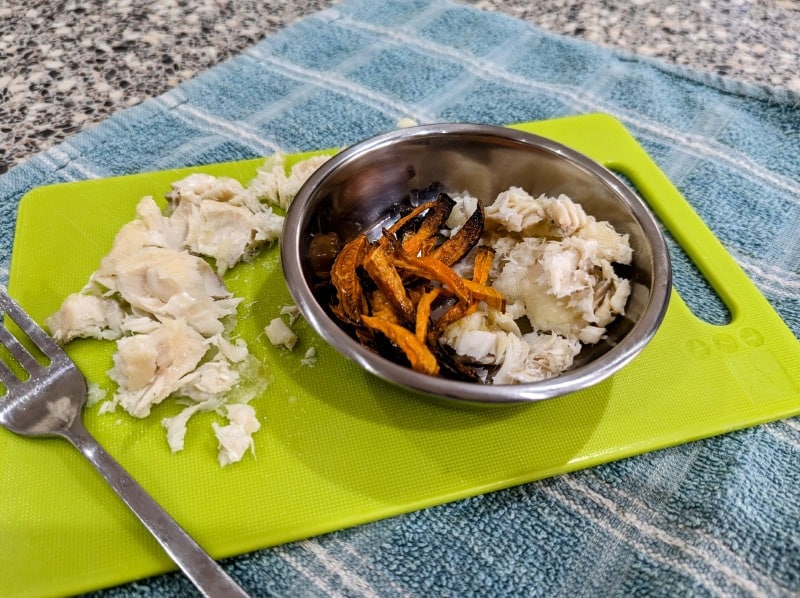
- 1 piece of frozen haddock (approx. 3” x 2”)
- 1.7 ounces of sweet potato
- Oil (olive or canola)
Preheat the oven to 350oF and line a baking tray with aluminum foil or baking paper. Use a basting brush to apply a layer of oil to the tray.
Cut the sweet potato into batons around 2 inches long and ¼ inch wide.
Place the potato batons onto the tray, and place the fish on top of the batons. Apply a light layer of oil to the top of the fish with a basting brush. After 10 minutes, turn the fish and place them directly onto the tray. Turn the potato batons and leave uncovered, then bake for another 10 minutes.
Allow to cool before serving. The fish will crumble when served.
- Serving Size: ½ portion of fish and six batons per cat, twice a week in place of a regular meal
Depending on the number of cats in your household, you may wish to cut the fish and potatoes and freeze the amounts you won’t be using until next time.
4. April – Chicken and the Egg
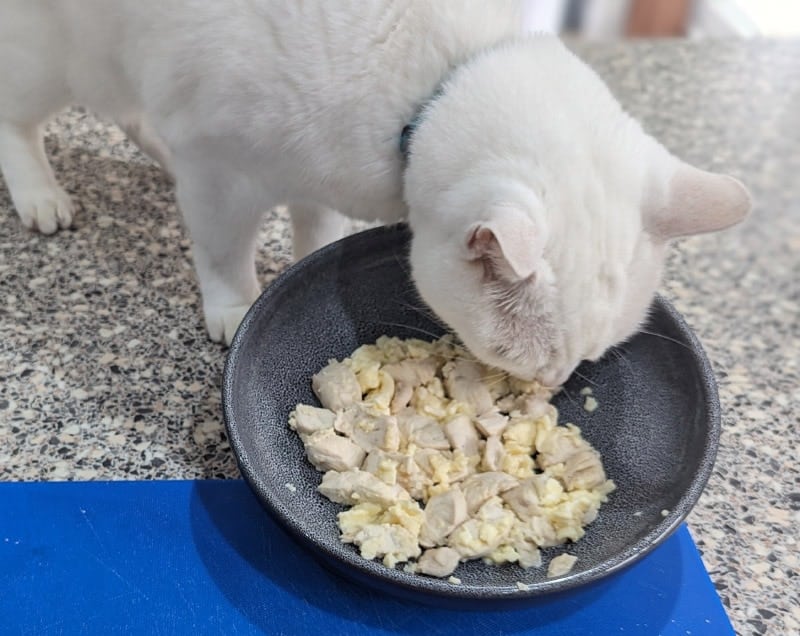
- 1 egg
- 1 chicken breast in 1-inch cubes
- 1 cup water
Place the chicken cubes in a microwave-safe bowl along with 1 cup of water. Cook on high in the microwave for 4 minutes. Check that the chicken is cooked through by slicing one of the cubes in half. Be careful, as they will be very hot!
Carefully remove the boiled chicken cubes from the water and set both of these aside.
Keep the broth from boiling the chicken to use in our next recipe!
Whisk/scramble the egg, and then tip the chicken cubes into the egg mixture. Using a frying pan on low heat, gently fry the eggy chicken until it is just losing its runny texture. Transfer onto a plate to cool.
- Serving Size: Half the mixture is one serving
5. May – Chicken Broth Popsicles
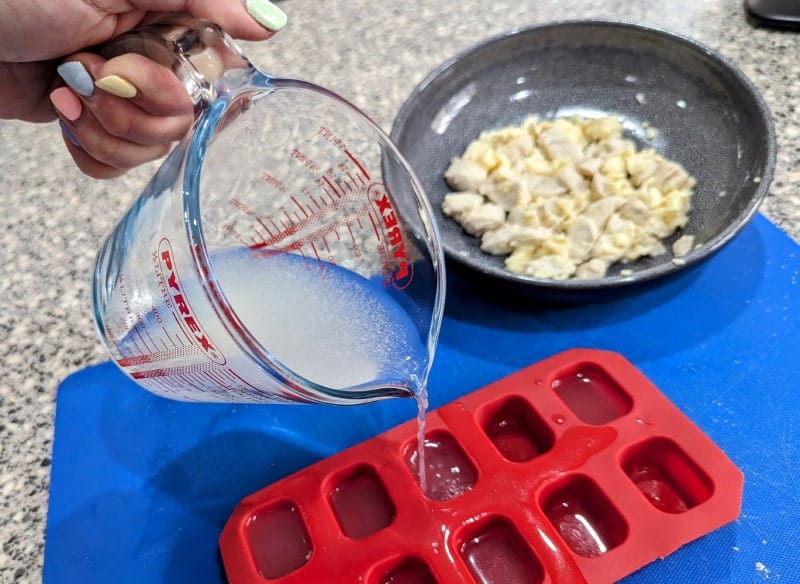
- Homemade chicken broth
This is the easiest recipe of them all! Take the water left from boiling the chicken in the recipe above, pour it into ice-cube trays, and freeze. Serve one up on a warm day, and watch your cat enjoy the chicken taste and the cooling effects. Just make sure you label the tray; no one wants chicken ice cubes in their soda!
- Serving Size: One cube
6. June – Sardine Ice Cream
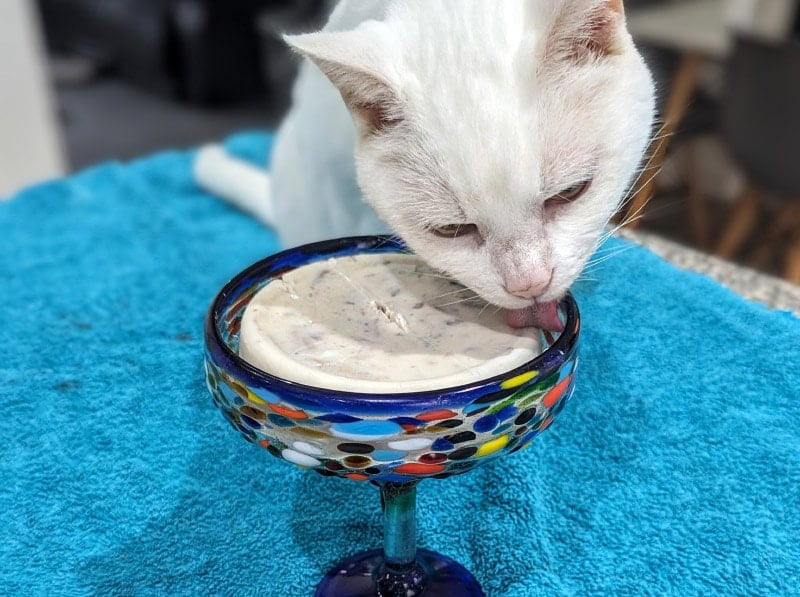
This is another tasty treat to offer your kitty on a warm summer’s day. We won’t be serving up ice cream, but we can give them something just as good!
- ½ cup of coconut cream (unsweetened)
- ½ tin (1.7 ounces) of sardines in water (boneless, less than 10% salt)
Drain and rinse the sardines. Then, using a fork, mash them into a consistent, flakey mixture. Combine with the coconut cream and until just mixed through. Pour mixture into a freezer safe container with a lid and place into the freezer. The ice cream will be quite hard from the freezer, so you can wait for it to soften before serving or cut it into lickable blocks. Another option is to make the ice cream the night before so it’s not left in the freezer too long before serving.
- Serving Size: 2 tablespoons, served once or twice per week
7. July – Mini Burgers
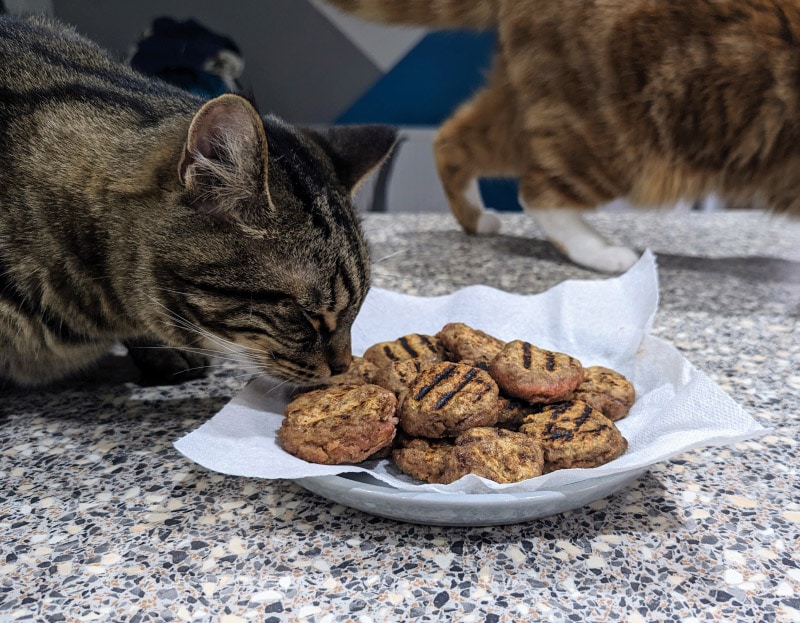
- 7 ounces of ground beef (100% beef, no additives)
- 2 eggs
- 1.4 ounces of corn meal
Combine all the ingredients in a mixing bowl with wet hands. Take small portions to roll into 1-inch balls and flatten into a burger patty. Fry in a frying pan or on the grill until cooked through, and serve once cooled. Now your kitty can feel included in your summer cookouts and 4th of July celebrations! The recipe will make around a dozen cat-sized patties, or you can make some larger ones for yourself.
Store cooked burgers in the fridge for up to 3 days or uncooked patties in the freezer for up to 3 months (remember to separate the patties before freezing).
- Serving Size: 1 burger per week
8. August – Breakfast Omelet
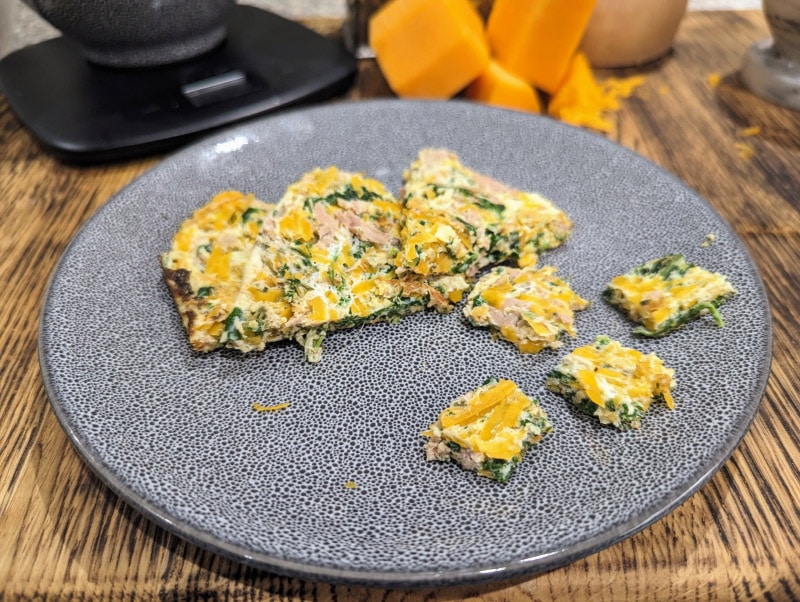
- 1 egg
- ¼ tin of tuna in spring water (not oil or brine), drained
- 1.4 ounces frozen chopped spinach, thawed and drained
- 1.7 ounces of butternut pumpkin, grated
Whisk/scramble the egg and combine it with the tuna, spinach, catnip, and pumpkin. Pour into a frying pan to cook, flip after a few minutes, and cut into quarters.
- Serving Size: One or two quarters per cat per week
9. September – Butternut Pumpkin Soup
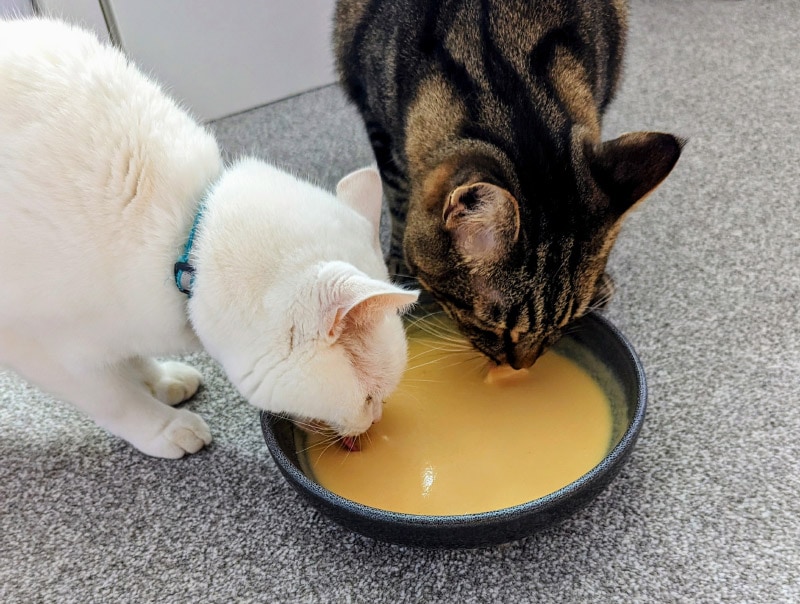
- 3.5 ounces of butternut pumpkin, diced
- 1 chicken breast, diced
- 1 tablespoon of coconut cream
- ½ cup of water
Combine the chicken, pumpkin, and water in a saucepan and bring to a low boil. Reduce heat and lightly simmer until the chicken is flakey and pumpkin soft (approximately 30 minutes). Allow to cool to room temperature. Use a blender to puree the mixture, adding the coconut cream once blended. Serve once cooled.
- Serving Size: 3 ounces per cat, once or twice per week
10. October – Pumpkin Meatballs
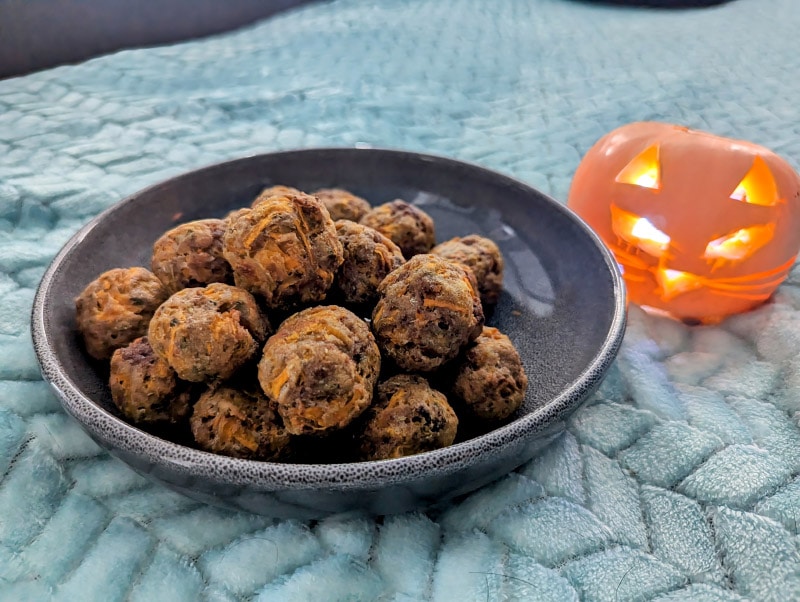
At this time of year, there’s always plenty of pumpkin in the supermarket, and this is one vegetable (although technically a fruit!) that is really kind to a cat’s digestive system, especially for those that suffer from hairballs or constipation.
- 3.5 ounces of pumpkin, grated
- ¼ cup of cornmeal
- 3.5 ounces of ground meat (beef, turkey, or chicken, no additives)
- 1 egg
- 1 teaspoon of catnip (dry, not fresh leaves)
Preheat the oven to 400oF. Line a baking tray with baking paper.
Combine all the ingredients in a mixing bowl. Roll into 1-inch balls and place on the baking tray and cook for 30 minutes. Check the meat is cooked all the way through by cutting one of the balls in half. Allow to cool before serving.
- Serving Size: 1 meatball per cat, twice per week
11. November – Roast Turkey With Gravy and Turkey Stuffing
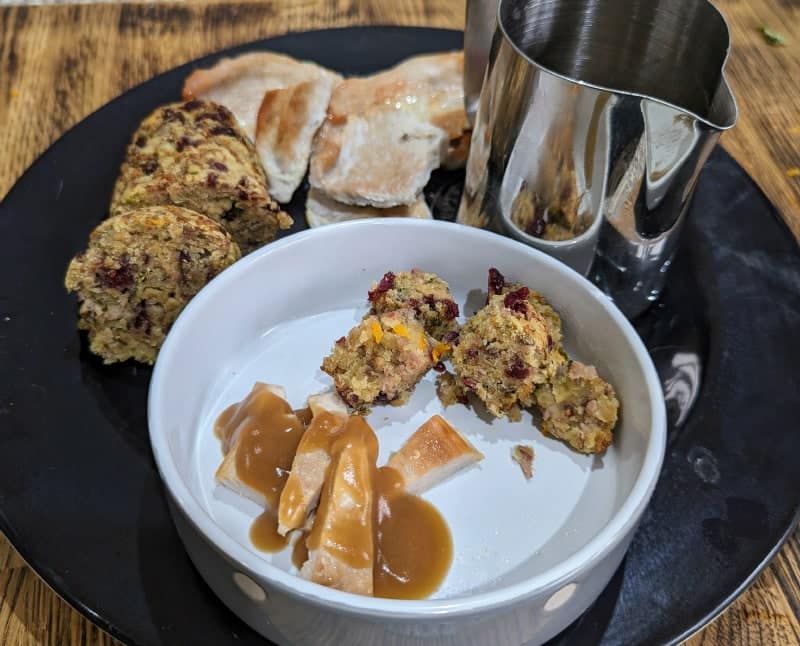
For those who want to make sure our feline friends don’t miss out on turkey day!
Roast Turkey and Gravy
- 1 turkey breast steak (light meat)
- Pet-friendly turkey bone broth
- 1 teaspoon oil (olive or canola)
Preheat the oven to 400oF and line a baking pan with foil. Pour the oil onto the foil and rub the turkey steak into the oil on both sides.
Cook for approximately 20–30 minutes or until the meat is golden brown. Carefully remove the pan from the oven and remove the turkey, being careful not to spill any of the liquid from the pan.
Prepare around 1.5 fluid ounces of bone broth according to the instructions and add the liquid/oil from the baking pan. Allow to cool. Cut the turkey into strips of approximately ½ by 1½ inches and drizzle the gravy over the top.
- Serving Size: 4 strips per cat twice per week
12. December – Turkey Stuffing

- 100 grams (3.5 ounces) ground turkey
- ¼ cup of cornmeal
- 2 tablespoons oil (olive or canola)
- 1 teaspoon dry catnip
Preheat the oven to 350oF and line a baking tray with baking paper. Lightly brown the turkey in 1 tablespoon of oil and allow to cool.
In a mixing bowl, combine the turkey, cornmeal, 1 tablespoon of oil, and the cranberries. Use your hands to mix the ingredients. The mixture should be able to hold together but not be too moist or sticky. If needed, add water to allow the mixture to bind together. Mix in the catnip.
Roll the mixture into a log on the baking tray and cook for 25–30 minutes, turning occasionally. The final product should maintain some form but also be slightly crumbly.
Divide into 6 equal portions.
- Serving Size: 1 portion, twice a week

A Note on Portion Sizes
The portion sizes at the end of each recipe are a guide only and should be adjusted appropriately for big cats, small cats, overweight cats, etc. Cats that are overweight should not be fed treats at all, but if you do, the portion sizes recommended should replace a meal, not be fed in addition to a meal.
For cats of a healthy weight, meal sizes should be reduced to half when fed any one of these treats unless otherwise specified.
The portion sizes are based on feeding just that type of treat in that period. For example, if allowed 1 portion twice a week, this should be the only treat they are fed that week.
Our Favorite Product Right Now
Since you invest a lot of time curating the perfect homemade recipes for your cat, it would only make sense to present it in a high-quality, modern bowl to match. Serve your cat in style with the Hepper NomNom Cat Bowl! Dual, stainless steel bowls are wide and shallow for optimum comfort and an elegant wide tray collects crumbs or splashes. Learn more about the NomNom Bowl here.
- NO MESS - The 360° tray on this cat food and water bowl set has a raised design to catch and...
- WHISKER FRIENDLY - Shallow and wide metal containers with flat bottoms ensure your kitty can enjoy...
- CHEW-SAFE MATERIALS - Kittens and cats love chewing on silicone and soft rubber - but it's a choking...
At Catster, we’ve admired Hepper for many years and decided to take a controlling ownership interest so that we could benefit from the outstanding designs of this cool cat company!

Parting Thoughts
We humans may not always be the best at limiting our treat intake, but it is important that we do so for our cats. These treats may be irresistible, but some contain ingredients that should not be part of your cat’s everyday diet, and they are higher in calories, too. Follow the serving guide at the end of each recipe, and enjoy becoming your feline friend’s favorite person!
Remember to always try a small taster before feeding a whole portion to ensure your cat does not have any reactions to these treats. If your cat has any food allergies, sensitivities, or illnesses, treats like these should be avoided. If you have any questions about whether these treats are right for your cat, always speak to your vet.
These recipes have been created using ingredients that are readily available from major supermarkets and have all been created by a vet and taste-tested and rated by their cats.
See also:
- Can Cats Eat Meatballs? Vet-Reviewed Dangers & Facts
- 3 Homemade Pumpkin Cat Treat Recipes To Enjoy This Fall
Featured Image Credit: Laura Chouette, Unsplash
Contents
- Before You Begin
- Top 12 Homemade Cat Treat Recipes
- 1. January – Winter Warmer Casserole
- 2. February – Jerky Hearts
- 3. March – Fish and Chips
- 4. April – Chicken and the Egg
- 5. May – Chicken Broth Popsicles
- 6. June – Sardine Ice Cream
- 7. July – Mini Burgers
- 8. August – Breakfast Omelet
- 9. September – Butternut Pumpkin Soup
- 10. October – Pumpkin Meatballs
- 11. November – Roast Turkey With Gravy and Turkey Stuffing
- 12. December – Turkey Stuffing
- A Note on Portion Sizes
- Parting Thoughts

